All About Wild Turkeys – A Large, Shy Bird
All About Wild Turkeys: Everything You Need to Know
Wild turkeys, with their striking plumage and keen instincts, are a fascinating symbol of North American wildlife.
Found across diverse habitats, these birds are known for their complex social structures and impressive adaptability.
Their gobbles echo through forests and fields, synonymous with the wilderness.
Understanding wild turkeys' behaviour, diet, and conservation status offers insight into their vital role in ecosystems and the cultural heritage they represent. Discover the intriguing world of wild turkeys in this article.
Species Of Wild Turkeys
Wild turkeys are divided into six recognized subspecies, each adapted to different regions and environments across North America:
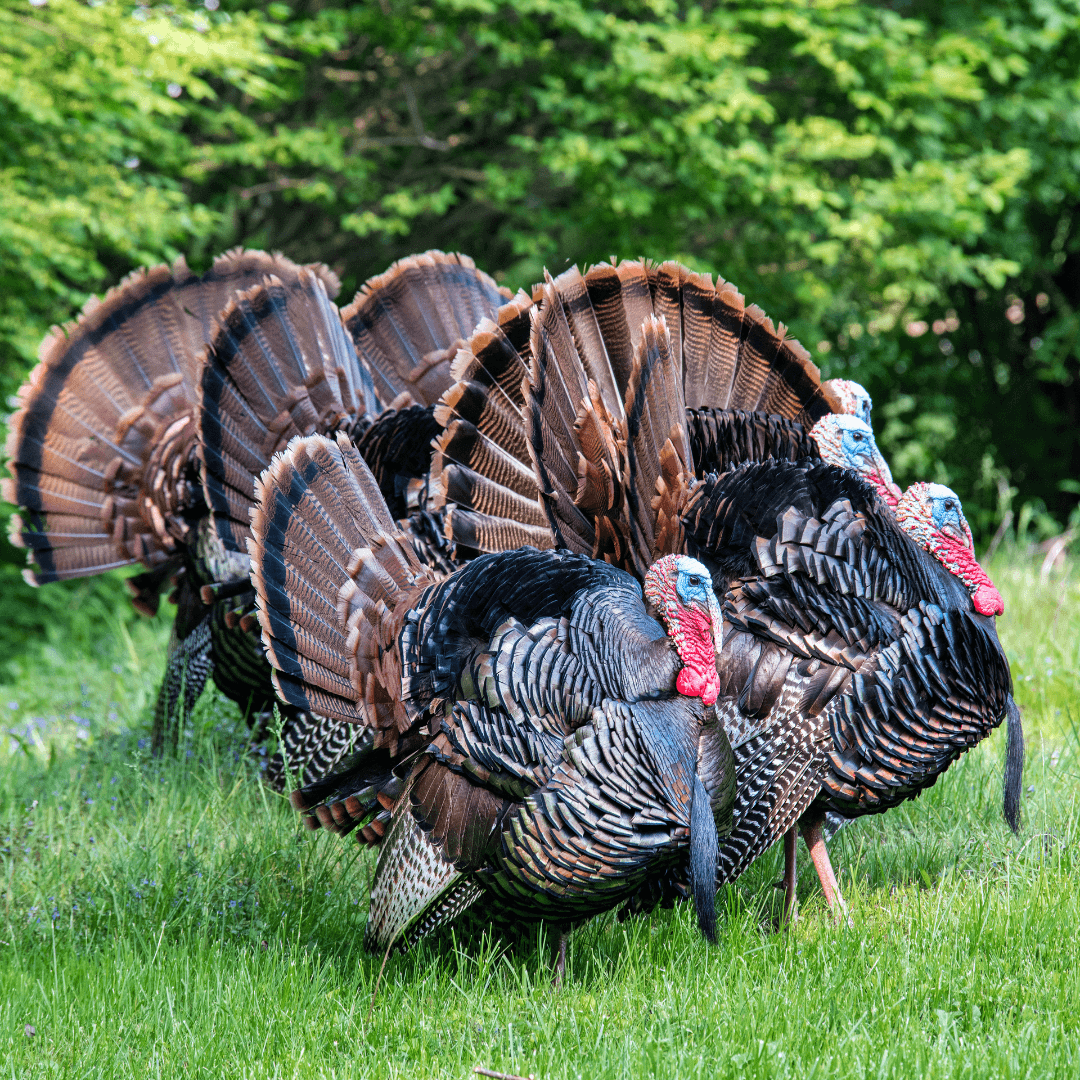
1. Eastern Wild Turkey (Meleagris gallopavo silvestris)
The most common subspecies of wild turkey, the Eastern Wild Turkey (Meleagris gallopavo silvestris), is found mostly in the eastern United States, extending from Maine to northern Florida and as far west as Texas and Minnesota.
Known for its striking appearance, this subspecies features rich, dark plumage with iridescent bronze, copper, and gold hues, providing excellent camouflage in the dense forests and woodlands it calls home.
Male Eastern Wild Turkeys, or toms, are particularly impressive with their large size, fan-shaped tail feathers, and bright red, blue, and white head coloration.
Their loud, resonant gobbles echo through the forests during mating season, serving as a call to attract hens and establish dominance over other males.
Eastern Wild Turkeys are highly adaptable and have successfully repopulated many areas where they were once nearly extinct due to overhunting and habitat loss.
Their varied diet consists of seeds, nuts, insects, and small reptiles, making them a vital part of the ecosystem.
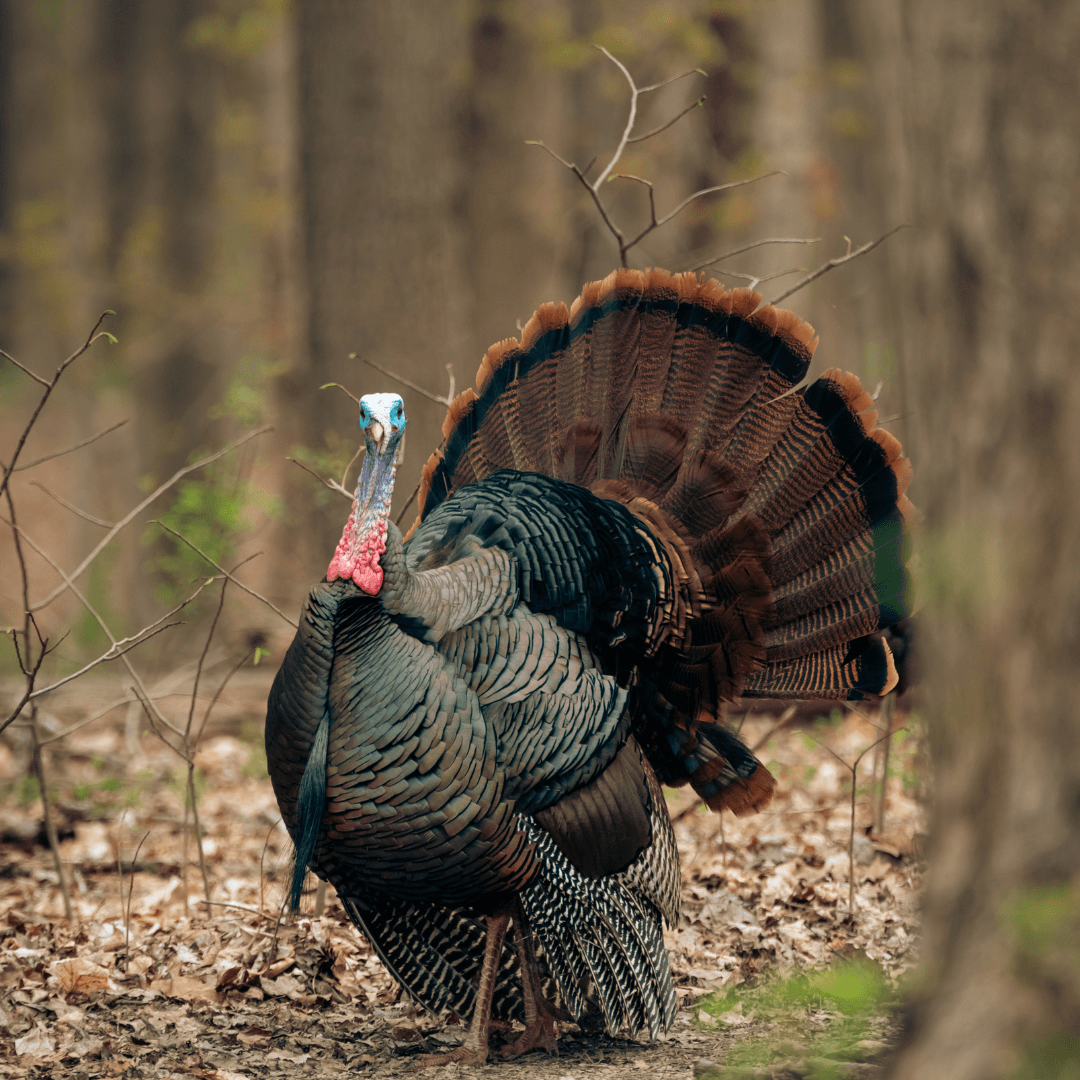
2. Osceola Or Florida Wild Turkey (Meleagris gallopavo osceola)
The Osceola or Florida Wild Turkey (Meleagris gallopavo osceola) is a distinct subspecies native to the Florida peninsula.
Smaller and more elusive than its counterparts, the Osceola turkey is well-adapted to the subtropical environment of Florida, including swamps, pine forests, and dense underbrush.
This subspecies is known for its strikingly dark plumage, which features more pronounced iridescent green and purple hues, giving it a unique, glossy appearance.
Compared to other subspecies, the Osceola turkey's feathers have less white barring, making its overall coloration darker and more vivid.
Osceola toms, or males, display the characteristic fan-shaped tails and bright red, blue, and white head colours during the breeding season, but their calls are typically quieter and more subtle than those of Eastern Wild Turkey.
Despite their smaller size, they are known for their agility and speed, making them a challenging target for hunters.
The Osceola Wild Turkey is a prized bird among turkey hunters due to its limited range and unique characteristics, contributing to its mystique and allure in wildlife conservation and game hunting.
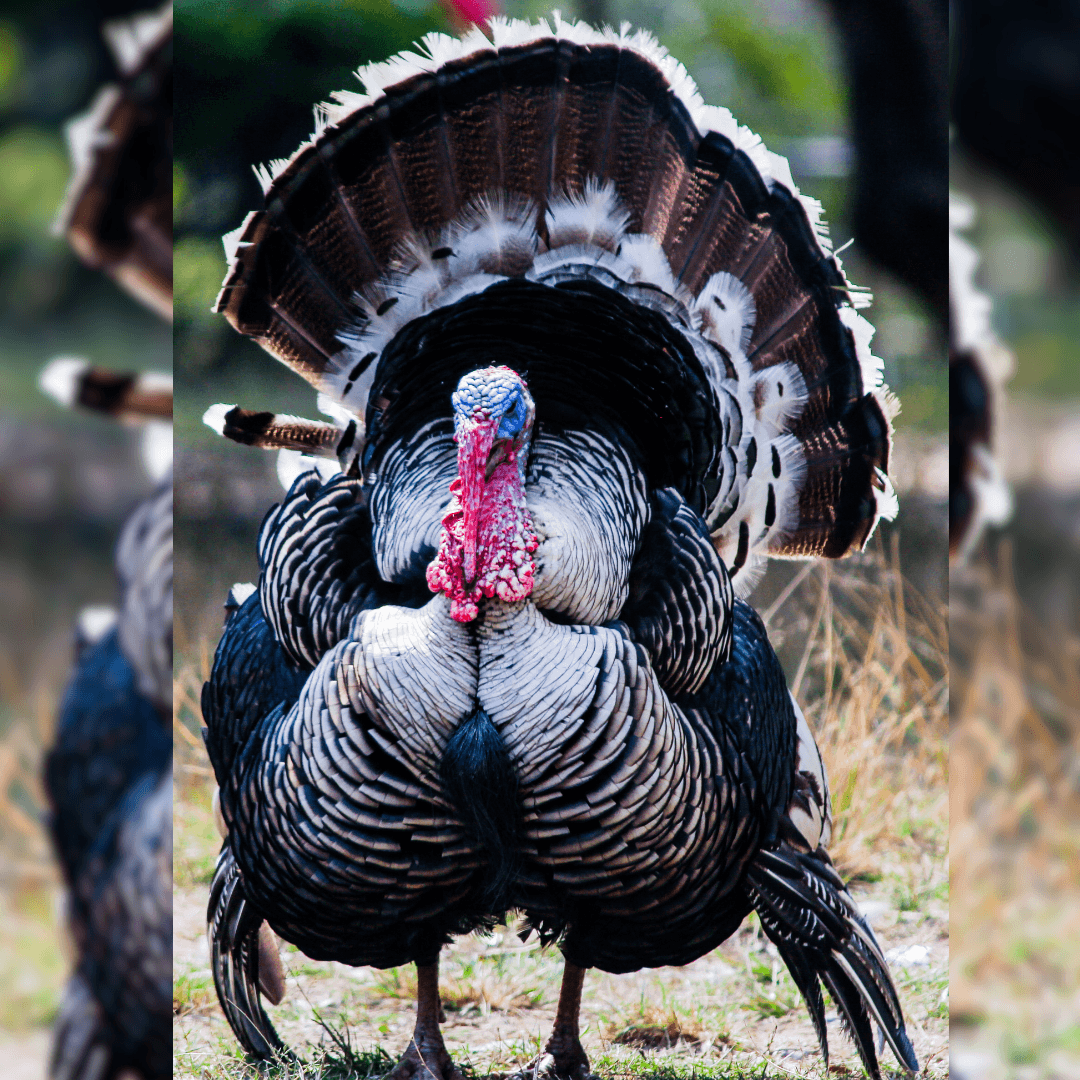
3. Rio Grande Wild Turkey (Meleagris gallopavo intermedia)
The Rio Grande Wild Turkey (Meleagris gallopavo intermedia) is a subspecies native to the central plains of North America, with a range that spans Texas, Oklahoma, Kansas, and parts of Mexico.
Adapted to the open landscapes of these regions, the Rio Grande turkey is characterized by its longer legs, which help it navigate the grassy plains and arid environments it inhabits.
This subspecies features lighter plumage compared to its eastern and southern relatives, with feathers with a distinctive coppery tint, especially on the body and tail.
The coloration provides effective camouflage in its habitat's sunlit, grassy terrains. The tail feathers of the Rio Grande turkey often have a buff or tan colour, creating a striking contrast during their display.
Male Rio Grande turkeys, known as toms, are recognized for their tall, slender build and loud gobbles, which can carry across the open plains. Their diverse diet consists of seeds, grains, insects, and small reptiles, reflecting their adaptability to various environments.
The Rio Grande Wild Turkey is a significant game bird, highly sought after by hunters due to its wide range and distinctive appearance.
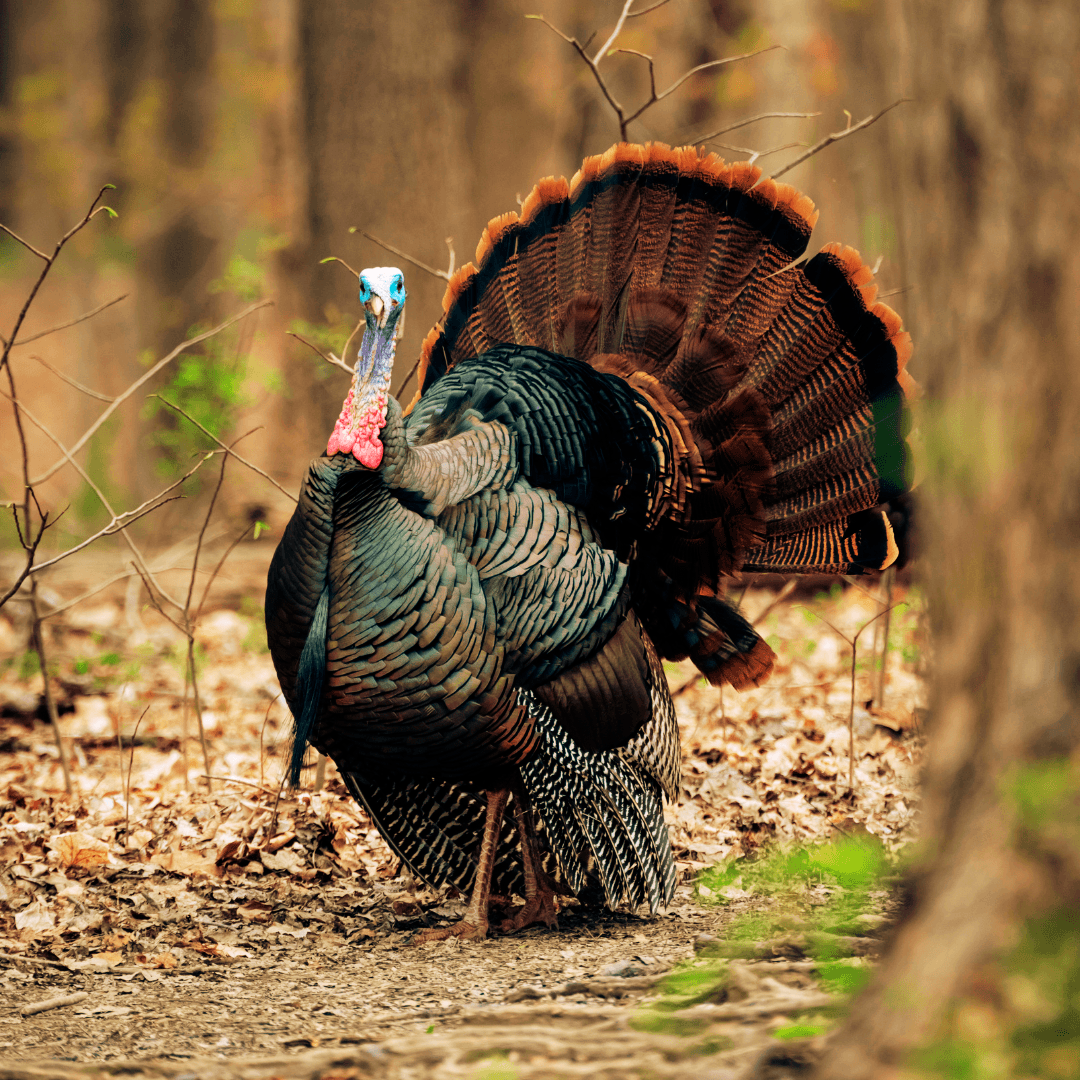
4. Merriam's Wild Turkey (Meleagris gallopavo merriami)
Merriam's Wild Turkey (Meleagris gallopavo merriami) is a striking subspecies that inhabits the mountainous regions of the western United States, including Colorado, New Mexico, and South Dakota.
Adapted to the rugged terrain of these areas, Merriam's Turkey is well-suited to the pine forests, high elevations, and varying climates of the region.
One of the most distinguishing features of Merriam's Wild Turkey is its plumage, particularly the light, almost white-tipped tail feathers and lower back feathers.
This coloration contrasts sharply with the darker body feathers, creating a visually striking appearance, especially when males, known as toms, fan their tails during courtship displays.
Merriam's turkeys are slightly smaller and lighter than other subspecies, aiding their agility and ability to navigate mountainous terrain.
Their gobbles are often heard echoing through the canyons and forests, adding to the wild character of these regions.
This subspecies is highly adaptable, feeding on seeds, berries, and insects. Due to its unique appearance and the challenging environments it inhabits, it has become a popular target for hunters.
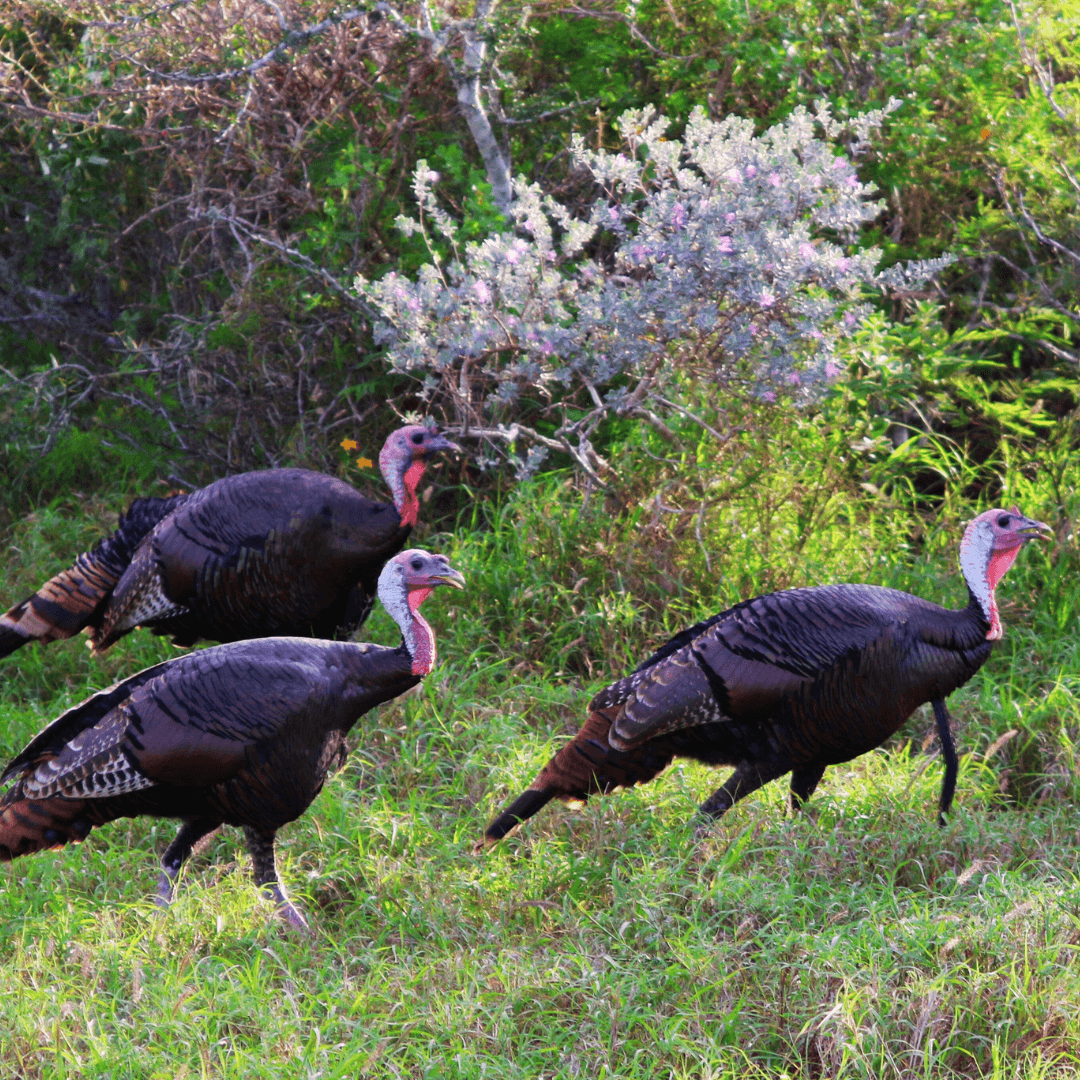
5. Gould's Wild Turkey (Meleagris gallopavo mexicana)
Gould's Wild Turkey (Meleagris gallopavo mexicana) is the largest subspecies of wild turkey, predominantly found in the mountainous regions of Arizona, New Mexico, and northern Mexico.
This impressive bird is adapted to rugged, high-altitude environments, where it thrives in pine-oak forests and mountainous terrains.
Gould's turkey is easily recognizable by its larger size, longer legs, and larger feet, which aid in navigating its habitat's steep and rocky landscapes.
Its plumage is particularly distinctive, featuring more white than other subspecies, especially on the tail feathers and lower back.
This gives Gould's turkey a striking, almost frosted appearance, especially when its feathers catch the light.
The males, or toms, are known for their elaborate courtship displays, where they fan their tails and strut to showcase their impressive size and plumage.
Their gobbles resonate through the mountains, making them a key part of the natural soundscape in their range.
Despite their size, Gould's Wild Turkeys are highly elusive, adding to their appeal for wildlife enthusiasts and hunters alike.
This subspecies, essential to the ecology of the mountainous regions, has been preserved thanks largely to conservation efforts.
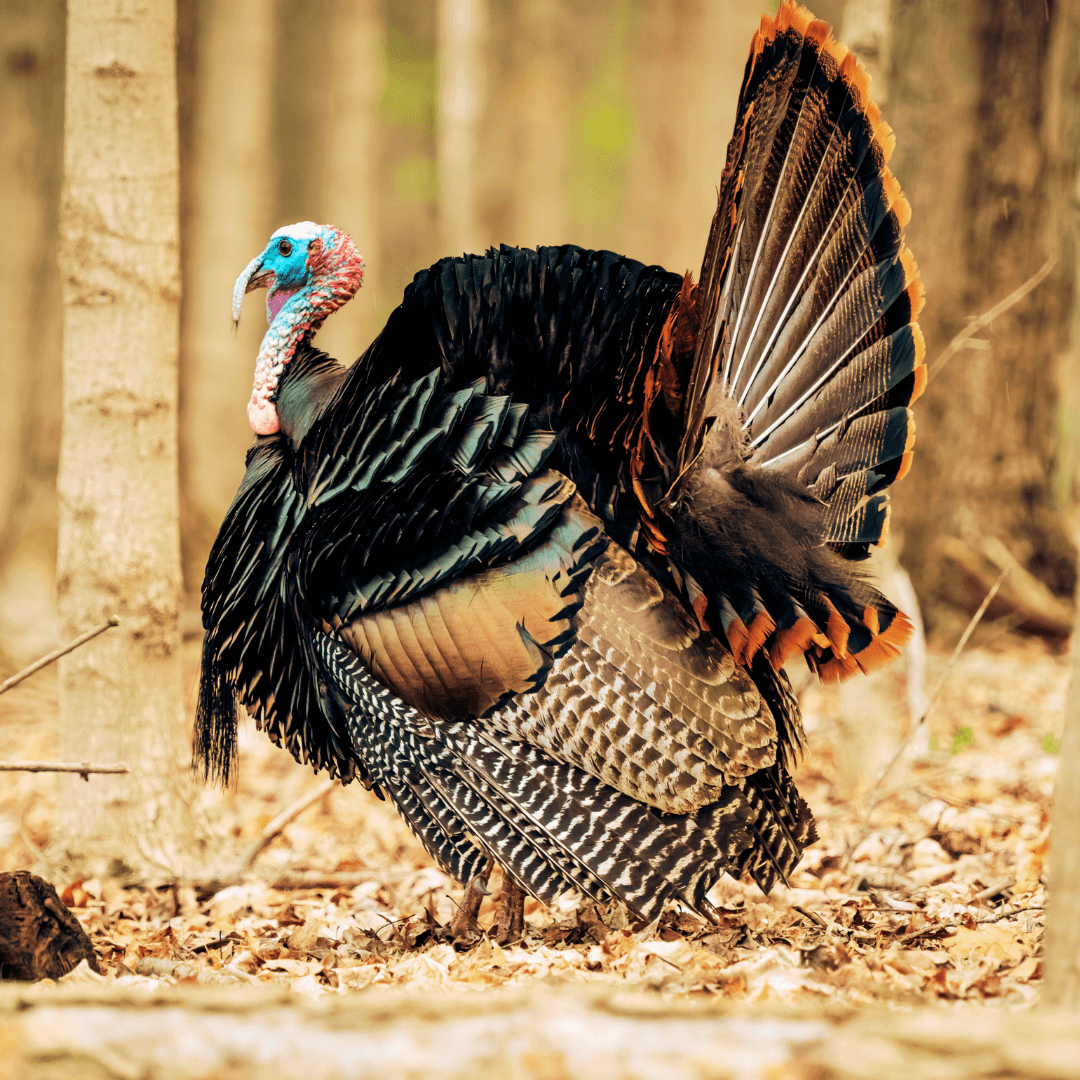
6. South Mexican Wild Turkey (Meleagris gallopavo gallopavo)
The South Mexican Wild Turkey (Meleagris gallopavo gallopavo) is the original wild turkey species derived from the domesticated turkey.
Native to the central and southern regions of Mexico, this subspecies is the least common and holds a unique place in natural and cultural history.
Unlike its more widespread relatives, the South Mexican Wild Turkey is known for its vibrant and colourful plumage.
Its feathers display a rich array of iridescent colours, including green, bronze, and copper shades, which shimmer in the sunlight.
This striking appearance makes it one of the most visually captivating wild turkey subspecies.
The South Mexican Wild Turkey is slightly smaller than others, but what it lacks in stature, it makes up for in its brilliant coloration and intricate feather patterns.
Males, or toms, exhibit typical turkey behaviours such as strutting and gobbling during the breeding season, although their calls are often quieter.
As the ancestor of all domesticated turkeys, the South Mexican Wild turkey has significant historical importance.
Despite its decline in numbers, conservation efforts are underway to protect this rare and beautiful subspecies, ensuring its survival for future generations.
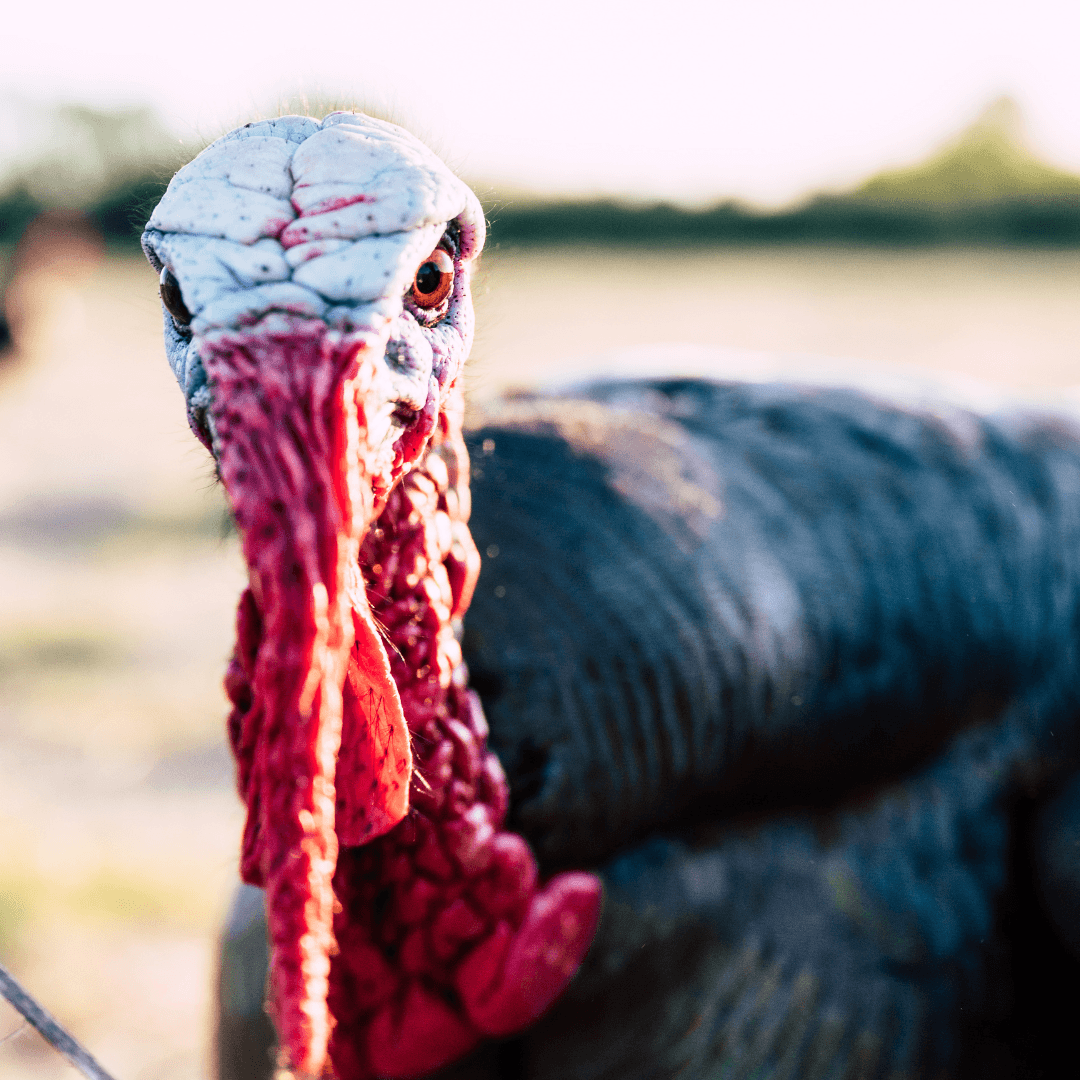
Wild Turkey Habitats
Curious about where wild turkeys live? These birds thrive in diverse habitats, from thick forests to open fields.
Let's explore the wild turkey habitat and uncover what makes these environments perfect for them.
1. Forests And Woodlands
Wild turkeys thrive in mature forests with a mix of hardwoods like oak and pines. These areas provide safe roosting sites in large trees and abundant food, including acorns, seeds, berries, and insects.
The forest floor and underbrush offer diverse foraging opportunities, essential for their diet.
These environments support their need for cover, food, and protection, making them ideal habitats for wild turkeys.
2. Open Fields And Grasslands
Wild turkeys primarily use open fields and grasslands for foraging, especially in spring and summer when they seek out insects and other invertebrates.
These open areas are rich in food sources and serve as ideal locations for mating displays, where males perform courtship rituals.
The lack of dense vegetation provides visibility, allowing turkeys to spot predators while they forage and engage in social behaviours.
3. Edges Of Forests And Fields
The edges of forests and fields create transitional habitats ideal for wild turkeys.
These areas offer the best of both worlds—dense forest cover for protection and roosting, along with the open spaces of fields rich in diverse food sources like seeds, berries, and insects.
Turkeys thrive here by utilizing the cover for safety while easily accessing abundant foraging opportunities in the adjacent fields.
4. Water Sources
Wild turkeys require fresh water daily, often near streams, rivers, or ponds. These water sources are crucial for drinking, supporting lush vegetation and insects, and providing additional food.
Turkeys prefer habitats where they can access water easily, especially during dry seasons, making proximity to reliable water sources essential for their survival and well-being.
5. Brushy Areas And Shrublands
Brushy areas and shrublands are vital for wild turkeys. They offer dense cover for nesting hens and protection from predators. These habitats provide a safe environment for laying eggs and raising young.
Additionally, turkeys forage in these areas for fruits, seeds, and other food sources. The dense vegetation helps conceal them from predators while allowing access to various foraging opportunities.
6. Agricultural Lands
Wild turkeys frequent agricultural lands and fields in certain regions, where they forage for grains, insects, and other food sources.
These areas provide abundant nutrition, especially during harvest times when grains are plentiful.
The open spaces of agricultural fields also offer turkeys a clear view to spot predators while they feed, making these lands valuable for their diet and safety.
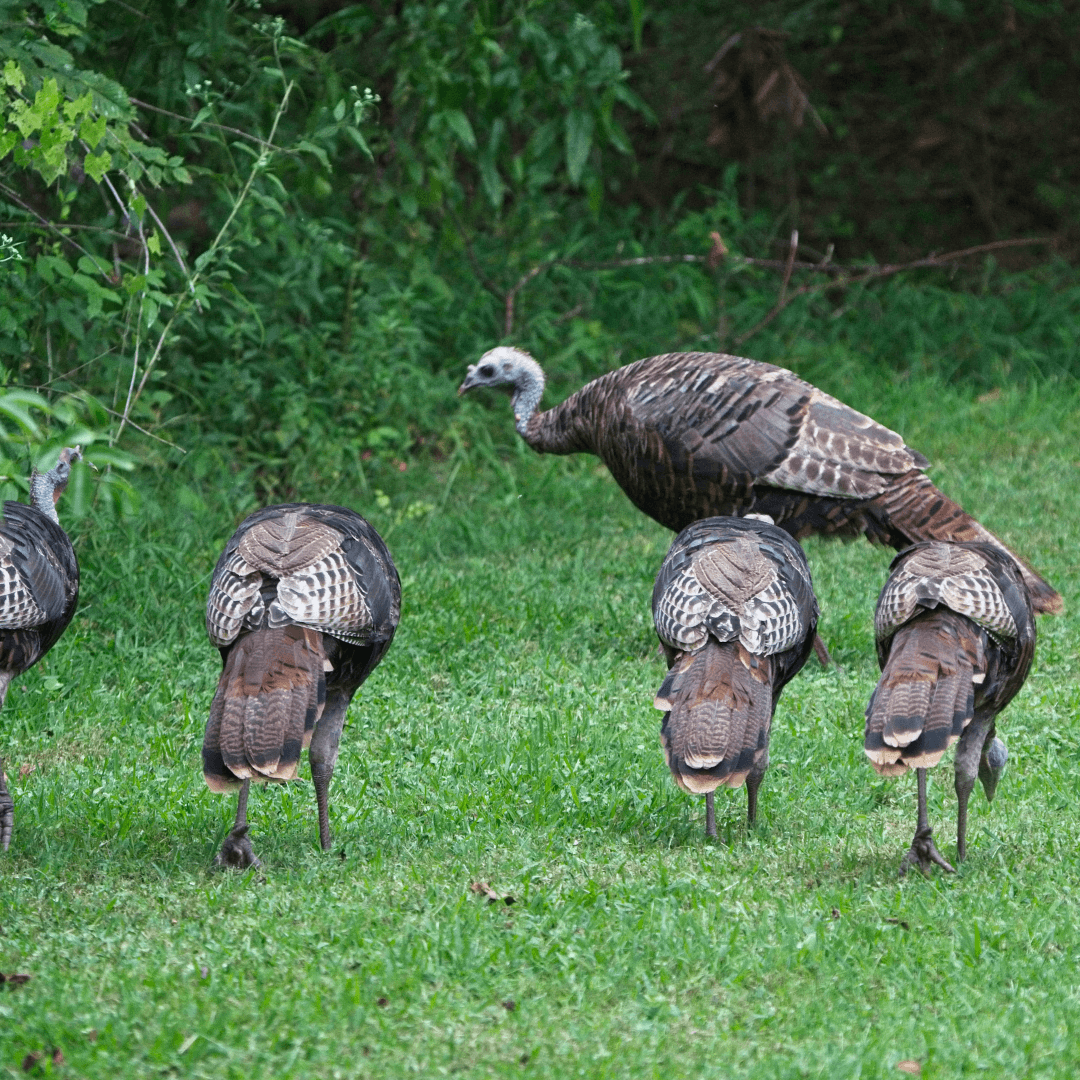
Physical Characteristics Of Wild Turkeys
Wild turkeys are striking birds with various physical characteristics that make them well-suited to their diverse habitats. Here are some key features:
1. Size and Build
Wild turkeys are large, robust birds. Males (toms) typically weigh between 11 and 24 pounds and measure up to 4 feet in length, including their tails. Females (hens) are smaller, usually weighing between 5 and 12 pounds.
2. Plumage
Wild turkeys have iridescent feathers that shimmer in shades of bronze, copper, gold, green, and even purple, depending on the subspecies.
This iridescence helps them blend into their environment, providing camouflage. The feathers on their wings are barred with white, and their tail feathers often have distinctive patterns that vary by subspecies.
3. Head And Neck
A wild turkey’s head is bare, with bluish-gray skin and red wattles (fleshy growths) on the throat and neck.
Males also have a fleshy appendage called a snood that drapes over their beak, which can change colour and size, particularly during mating displays.
4. Beard
Adult male turkeys often have a “beard,” a tuft of coarse, hair-like feathers protruding from the chest. This beard can grow up to 10 inches long and is a secondary sexual characteristic.
5. Legs And Spurs
Wild turkeys have strong, long legs adapted for walking long distances. Males typically have sharp spurs on their legs, which they use for defence and during fights with other males.
6. Eyesight And Hearing
Wild turkeys have excellent eyesight and a wide field of vision, which helps them detect predators from a distance.
Their hearing is also highly developed, allowing them to pick up subtle sounds in their environment.
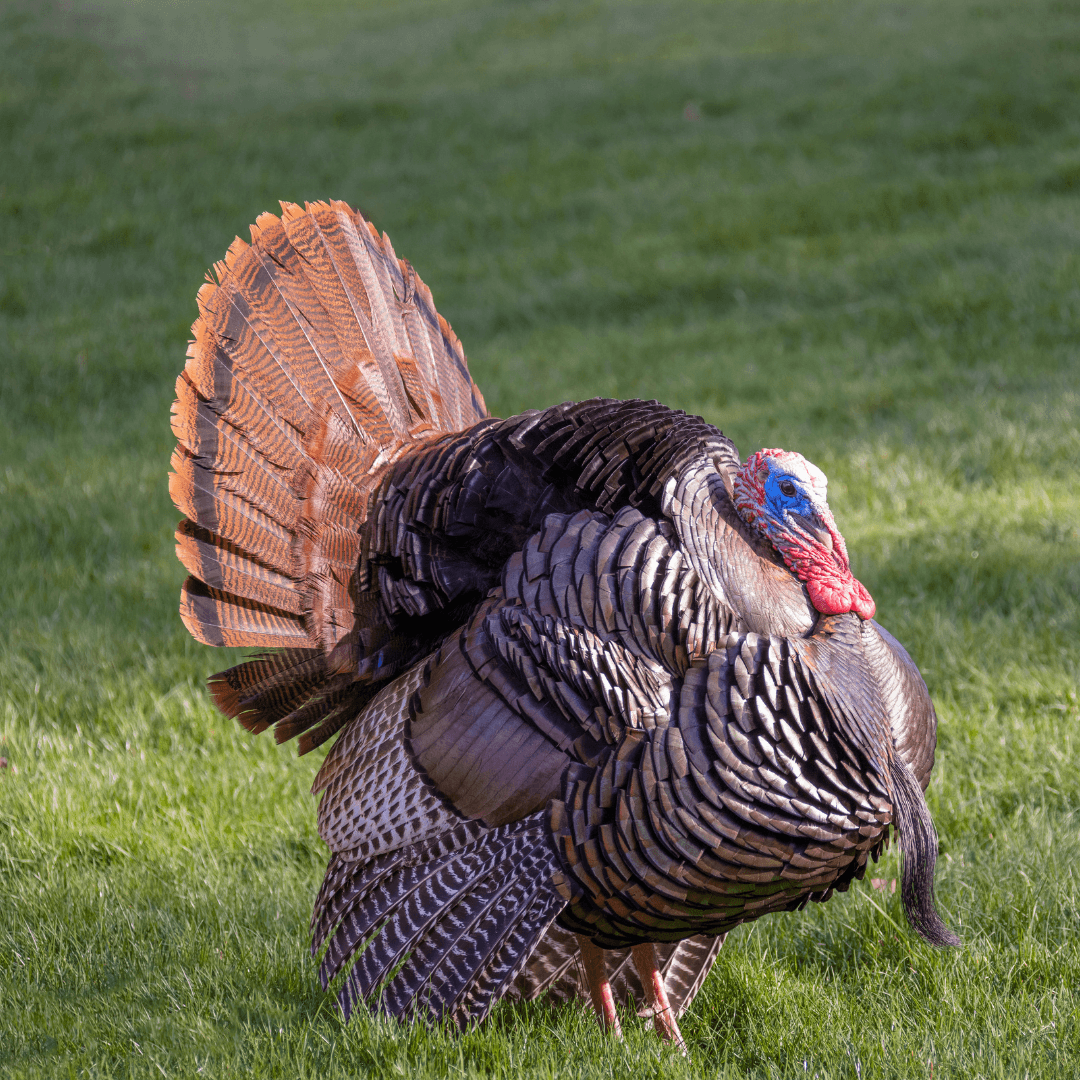
Behaviour Of Wild Turkeys
Wild turkeys exhibit a range of fascinating behaviours that contribute to their survival and social interactions:
1. Vocalizations
Wild turkeys use a wide range of calls to communicate with one another. The most well-known is the male's “gobble,” a loud, resonant call used to dominate other males and draw in females.
It can be heard over great distances. In addition to gobbling, turkeys produce clucks, purrs, and yelps, which serve different purposes, such as signalling alarm, maintaining contact with the flock, or calling to young.
2. Dust Bathing
Wild turkeys regularly perform dust bathing to maintain their plumage and rid themselves of parasites.
They create shallow depressions in dry soil and use their wings to toss dust over their bodies, which helps to keep their feathers in good condition and their skin free from mites.
3. Roosting
Wild turkeys seek cover from ground predators at night by roosting in trees.
They choose tall, sturdy branches where they can rest in groups, providing them with a vantage point to spot potential threats.
4. Seasonal Movement
While wild turkeys do not migrate traditionally, they exhibit seasonal movements within their home ranges.
In the winter, they may move to lower elevations or more sheltered areas to find food and avoid deep snow, while in the summer, they often spread out in search of abundant food sources.

Fun Facts About Wild Turkeys
Ready to gobble up some knowledge? These fascinating birds are full of surprises that leave you amazed.
From their incredible eyesight to unique communication methods, let's dive into some fun facts about wild turkeys that will make you see these feathered creatures in a new light.
1. Colour-Changing Skin
Depending on mood, a wild turkey’s head and neck skin can change colour. The skin may turn bright red, white, or blue when excited or agitated, especially during the breeding season.
2. Snood Length
The fleshy snood that hangs over a male turkey’s beak can grow or shrink depending on its mood and environment. It attracts females, with a longer snood often indicating a more dominant and healthy male.
3. Feathered Legs
Unlike domestic turkeys, wild turkeys have feathered legs, which help protect them from cold and rough terrain as they forage.
4. Memory Skills
Wild turkeys have an excellent memory, particularly when mapping out their territory. They can remember the locations of various food sources and roosting spots over large areas.
5. Turkey Talk
Besides their well-known gobble, wild turkeys have a repertoire of more than 20 vocalizations. Each sound has a specific meaning, such as signalling danger, locating other flock members, or communicating with their young.
6. Group Names
A group of wild turkeys is known as a “rafter” or a “flock.” During the winter, these flocks can sometimes number in the hundreds, protecting each other.
More Wild Turkey Fun Facts
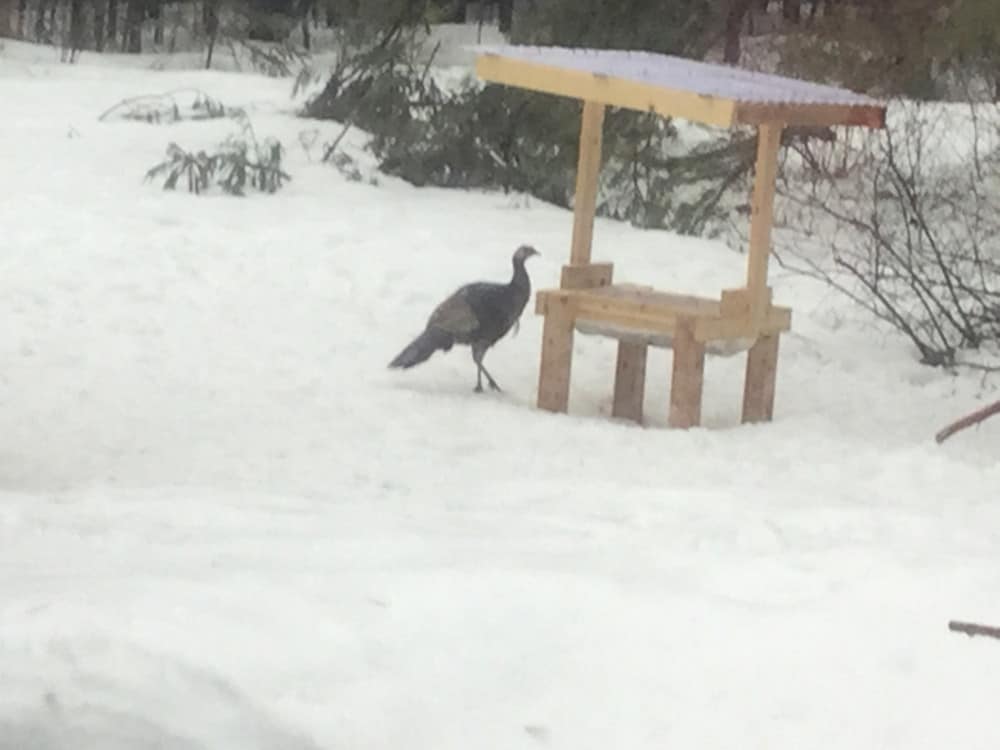
- Wild turkeys are very quick. They can run up to 20 miles per hour.
- The lifespan of a turkey living in the wild is only 3 – 4 years.
- In the Fall, they start living in flocks. These flocks can include hundreds of turkeys.
- Wild turkeys fly when there is danger, and they cannot run. Young turkeys love to use their wings and fly more frequently.
- Wild turkeys roost in trees during the night. They are safe from most predators while sleeping.
- The adult male turkey (tom) normally weighs from 5 to 11 kg (11 – 24 lbs) and measures 100 – 125 cm (39-49 inches) in length. The hen is typically much smaller at 2.5-5.4 kg (5.5-11.9 lbs) and is 75 – 95 cm (30 – 37 inches long).
- The wild turkeys are good fliers despite their weight. They have excellent eyesight during the day. Their night vision is poor. That's why they roost on trees up to 16 meters high in large groups, which makes them safe from nighttime predators.
- Since the wild turkeys don't migrate in the winter, they need to find large conifers to fly up to protect them from blizzards.
Conclusion
I found it very interesting to research the wild turkeys and their lives. I learnt so much about them, especially through Joe Hutto's book.
Turkeys are an interesting species. If you want to know more about them, I recommend reading “Illumination in the Flatwoods” by Joe Hutto.
In it, he tells the story of his time spent with the turkeys after rescuing and incubating two clutches of eggs. This is a fascinating book; if you love nature as much as I do, you will enjoy reading it.
There is not much information about wild turkeys online unless, of course, you are a hunter. So, I had to do quite a bit of digging. I thoroughly enjoyed writing this article. I hope you learned something new today.
I trust you enjoyed this All About Wild Turkeys—A Large, Shy Bird article. Please stay tuned for more blog posts soon. Take care!
JeannetteZ
Your Opinion Is Important To Me
Do you have thoughts, ideas, or questions? I would love to hear from you. Please leave me your questions, experiences, and remarks about this All About Wild Turkeys – A Large Shy Bird article in the comments section below. You can also email me at Jeannette@Close-To-Nature.org.
Disclosure
This post may contain affiliate links. As an Amazon Associate and other affiliate programs, I earn from qualifying purchases at no extra cost to you. Please read my full affiliate disclosure.
You might also enjoy these blog posts:
Interesting Facts about Woodpeckers
Interesting Facts about Squirrels
Best Simple Ways To Relieve Stress And Anxiety
Why Is My Dog Stressed And How To Relieve It

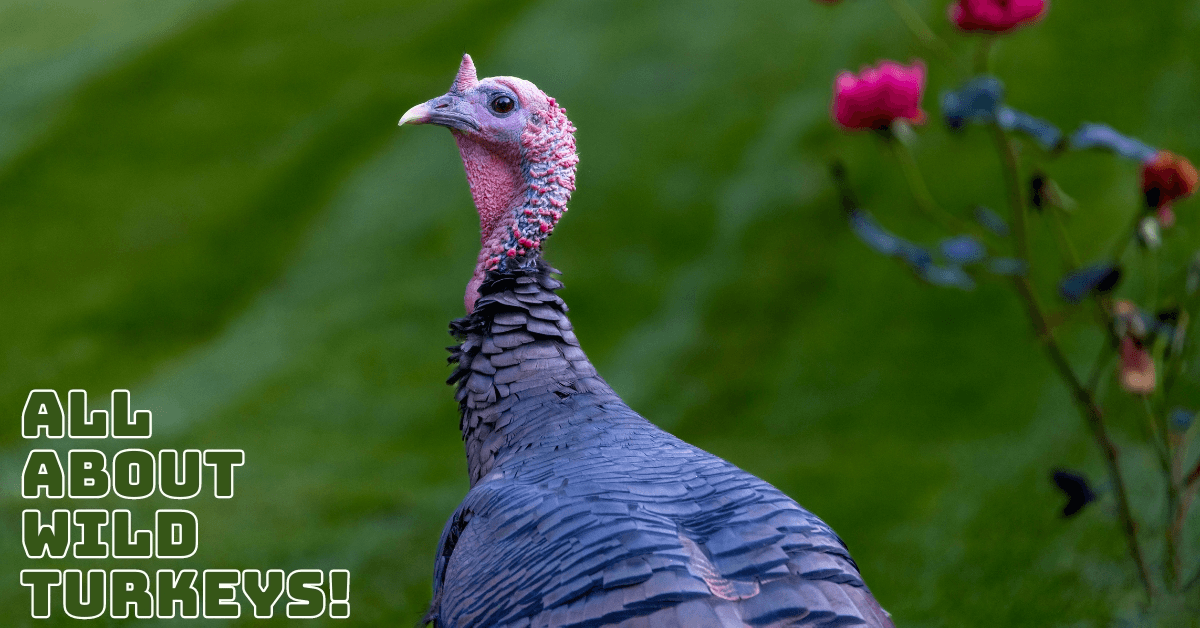
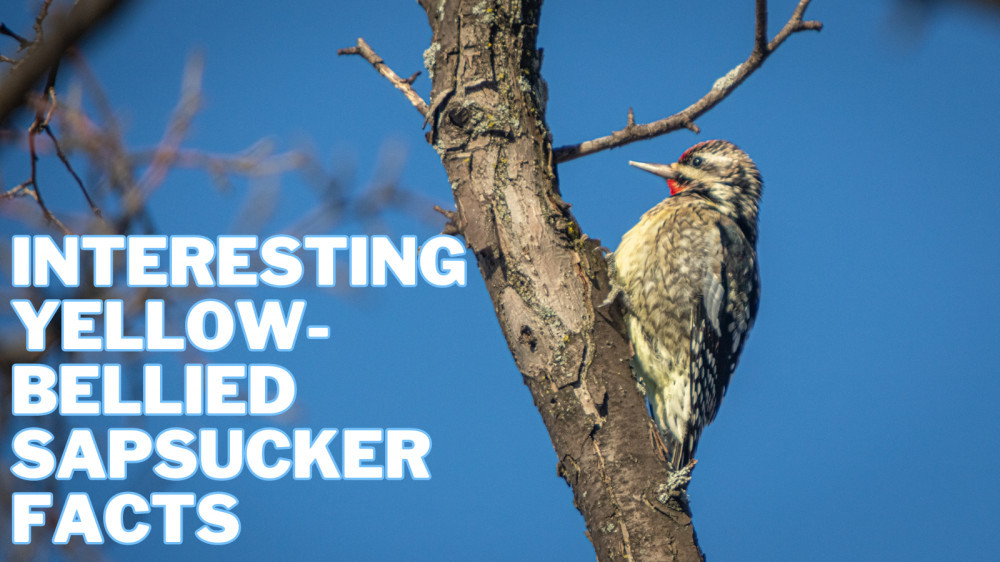


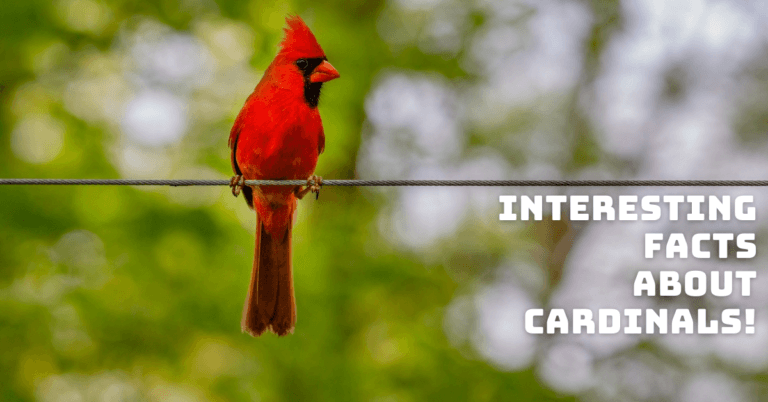

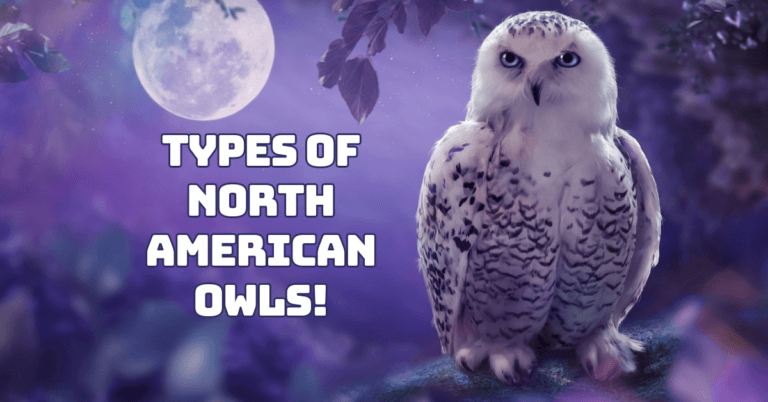
Hello. I heard for the first time for the wild turkeys. You provide for all animals lovers a good article, with lot of information. I didn’t know that they can live in wilderness, and succeed live there and lay eggs. My family every year buy a little baby turkey, but they are domestic. Can you make wild turkey a domestic animal?
Hi Aleksandra,
I don’t think you can domesticate wild turkeys. They are totally different from domestic turkeys. The domestic turkeys are white and larger than the wild turkeys, which are brown to dark brown. The turkeys I wrote about, live in the woods. We have some visiting our bird feeders every day. I learnt a lot about turkeys in this book: “Illumination in the Flatwoods” by Joe Hutto. He writes about how someone brought him two clutches of abandoned eggs and how he brought the wild turkeys up.
Thanks for the interesting post! One of the amazing things about these wild turkeys is that they live in woods and lay eggs there. I think the area of similarity between the wild turkeys and the domestic ones is, they both lay eggs and reproduce. I would have loved to have access to these wild turkeys so I can physically see how they look and sound natural. I hope to do that someday but will love to learn more about them. Thanks for the enlightenment!
Joyce
Hi Joyce,
I am glad you enjoyed the article about wild turkeys. They are smaller than the domestic turkeys and have brownish feathers vs. white.
Especially now, with all the snow, they are regular guests at our bird feeders. In the summer, they come by here with their chicks.
It is very interesting that now that I know their “language,” I hear them calling each other in the woods every time I am outside. They are huge birds and even taller than our West Highland White Terrier or our cat. I would love to show them to you.
Jeannette
I am just getting around to reading your wonderful article about wild turkeys. There is a flock of approximately 15 to 20 in my neighborhood. I have dense woods behind my house and that is where they gather in the evening and fly into the trees to roost. I wondered where they laid their eggs and the number in each clutch. I loved reading this article and learning more about these fascinating creatures. My neighbors and I enjoy seeing them strutting around the “hood.
Thank you very much for your comment, Priscilla. I am so pleased to see that people are actually reading my articles. I love to observe the turkeys. We have lots of wild turkeys in our neighbourhood. We even have a couple of them visiting our birdfeeders. They also lave to deer food. This winter I noticed a couple of turkey vultures. They have naked heads but beautiful feathers. You might enjoy the book “Illumination in the Flatwoods by Joe Hutto. I was amazed at how much I learned about this large, but very shy bird.